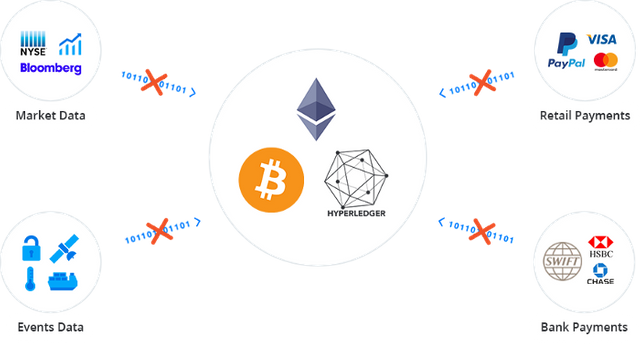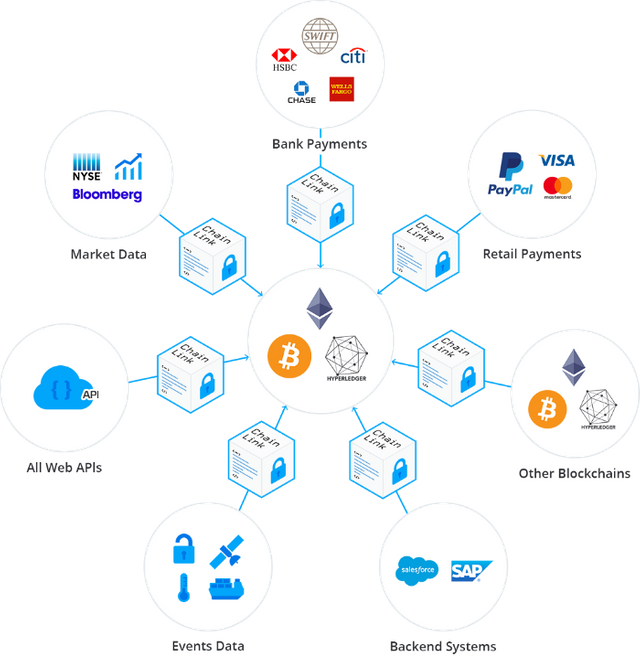ChainLink, an Overview and the Focus
Hello all crypto lovers
We are all running behind Chainlink on the possibility of it making to top 3 coins very soon!
Let's try to understand about this project to get started.
Defining the Smart Contract Connectivity Problem
A smart contract is a digital agreement that has been made tamper-proof by being run on a decentralized node network e.g. Ethereum; creating a more trustworthy, and therefore a superior form of digital agreement.
The Smart Contract Connectivity Problem, is the inability of a smart contract to interact with any external data feed, or other resource that is run outside the node network in which the smart contract itself is executed.
The decentralized nature of smart contracts that makes them tamper-proof, also removes their ability to access key contractual performance data, denying them the use of any & all web APIs, as well as precluding them from utilizing important existing outputs like bank payments. This lack of external connectivity is inherent to all smart contract networks, due to the method by which consensus is reached around blockchain transactions, and will therefore be an ongoing problem for all smart contract networks.
This lack of connectivity with external resources creates a large limitation for what a smart contract developer can build today. Without key inputs like data feeds to prove performance (IoT for insurance, market prices for securities, GPS about shipments, etc..), or key outputs (widely accepted bank payments), it becomes difficult to build smart contracts which have the functionality we’ve come to expect from a well made web/mobile application. If we examine the way a successful application like Uber is built, we see the application’s core code using a combination of key inputs (GPS data), and critical outputs (SMS & Payments). If we tried to build an application like Uber without access to these key building blocks, we’d have to build the inputs/outputs ourselves, in addition to the highly complex application itself. Making all of the building blocks that a good application relies on to come into existence is the work of multiple companies; providing accurate GPS data (Google), interfacing with telecoms for SMS (Twilio), and providing usable bank to bank payments (Stripe), are all critical building blocks which were not built by the companies that rely on them to make a working application. The ability for smart contract developers to easily access similarly useful building blocks for their decentralized application, is what we believe would be needed to enable the creation of increasingly more useful smart contracts.

The Solution is a Secure Blockchain Middleware
Luckily, the many inputs and outputs needed by a smart contract already exist in the form of the data feeds and APIs used by web/mobile applications. The problem we need to solve, is the ability for a smart contract to connect with these many external resources in a way that retains the smart contracts value for end-users; a tamper-proof digital agreement that is trustworthy. There should now be a secure, decentralized and tamper-proof way to trigger smart contracts with external events/data, while also sending key payment outputs.
ChainLink seems to provide a secure, decentralized and therefore tamper-proof “blockchain middleware”, while also being an easy way to access the multiple inputs and outputs needed by a complex smart contract. By greatly simplifying how smart contracts can securely access key off-chain resources, ChainLink accelerates the development of increasingly useful smart contracts.
The solution provided by Chainlink can be visualized as depicted in below diagram

If I understand correctly, this project is all about allowing blockchain projects like btc/eth to talk with real world application for data exchange?
You are spot on. This communication is achieved through oracles.